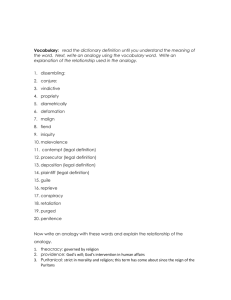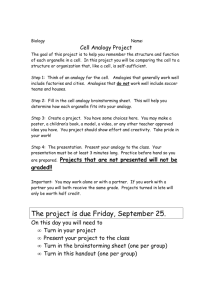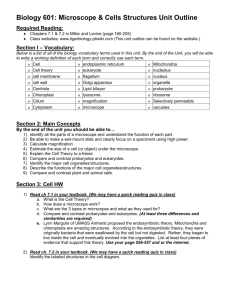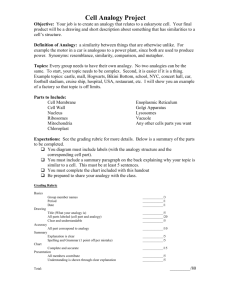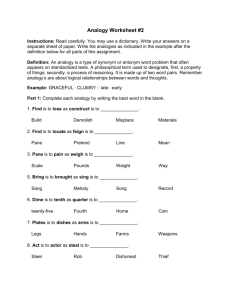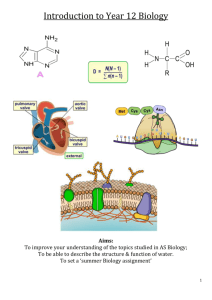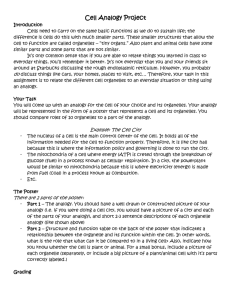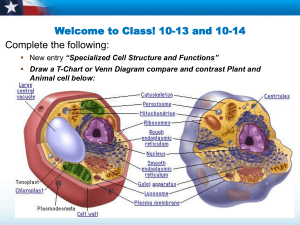AP BIOLOGY SUMMER WORK
advertisement
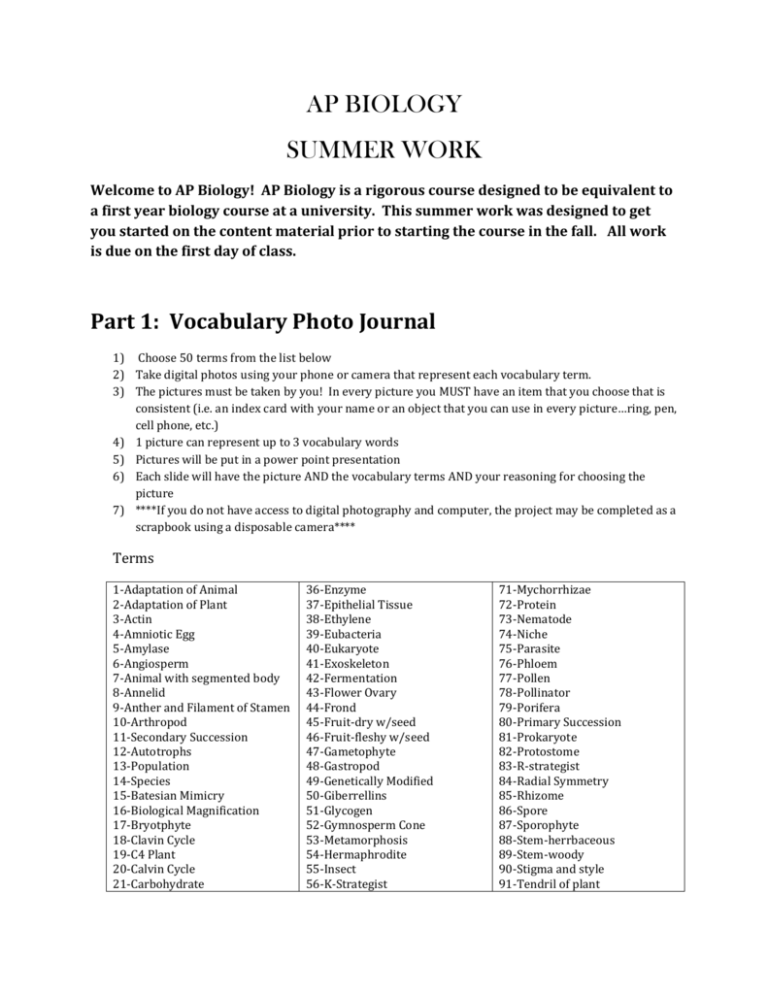
AP BIOLOGY SUMMER WORK Welcome to AP Biology! AP Biology is a rigorous course designed to be equivalent to a first year biology course at a university. This summer work was designed to get you started on the content material prior to starting the course in the fall. All work is due on the first day of class. Part 1: Vocabulary Photo Journal 1) Choose 50 terms from the list below 2) Take digital photos using your phone or camera that represent each vocabulary term. 3) The pictures must be taken by you! In every picture you MUST have an item that you choose that is consistent (i.e. an index card with your name or an object that you can use in every picture…ring, pen, cell phone, etc.) 4) 1 picture can represent up to 3 vocabulary words 5) Pictures will be put in a power point presentation 6) Each slide will have the picture AND the vocabulary terms AND your reasoning for choosing the picture 7) ****If you do not have access to digital photography and computer, the project may be completed as a scrapbook using a disposable camera**** Terms 1-Adaptation of Animal 2-Adaptation of Plant 3-Actin 4-Amniotic Egg 5-Amylase 6-Angiosperm 7-Animal with segmented body 8-Annelid 9-Anther and Filament of Stamen 10-Arthropod 11-Secondary Succession 12-Autotrophs 13-Population 14-Species 15-Batesian Mimicry 16-Biological Magnification 17-Bryotphyte 18-Clavin Cycle 19-C4 Plant 20-Calvin Cycle 21-Carbohydrate 36-Enzyme 37-Epithelial Tissue 38-Ethylene 39-Eubacteria 40-Eukaryote 41-Exoskeleton 42-Fermentation 43-Flower Ovary 44-Frond 45-Fruit-dry w/seed 46-Fruit-fleshy w/seed 47-Gametophyte 48-Gastropod 49-Genetically Modified 50-Giberrellins 51-Glycogen 52-Gymnosperm Cone 53-Metamorphosis 54-Hermaphrodite 55-Insect 56-K-Strategist 71-Mychorrhizae 72-Protein 73-Nematode 74-Niche 75-Parasite 76-Phloem 77-Pollen 78-Pollinator 79-Porifera 80-Primary Succession 81-Prokaryote 82-Protostome 83-R-strategist 84-Radial Symmetry 85-Rhizome 86-Spore 87-Sporophyte 88-Stem-herrbaceous 89-Stem-woody 90-Stigma and style 91-Tendril of plant 22-Cambium 23-Chitin 24-Cnidarian 25-Coelomate 26-Conifer Leaf 27-Commensalilsm 28-Connective Tissue 29-Cuticle Layer of Plant 30-Deciduous Leaf 31-Dicot Plant w/flower 32-Echinoderm 33-Ectotherm 34-Endosperm 35-Endotherm 57-Keratin 58-Bryophyte 59-Lichen 60-Lignin 61-Lipid 62-Long Day Plant 63-Meristem 64-Modified Leaf of Plant 65-Modified Root of Plant 66-Modified Stem of Plant 67-Monocot plant 68-Muscle Fiber 69-Mutualism 70-Mycelium 92-Thorn of plant 93-Unicellular organism 94-Vascular Plant tissue 95-Xylem Part 2-Cell Analogy Project Introduction: Cells need to carry on the same basic functions as we do to sustain life; the difference is cells do this with much smaller parts. These smaller structures that allow the cell to function are called organelles-tiny organs. Your Task: You will come up with an analogy for the cell of your choice (plant or animal) and its organelles. Your analogy will be represented in the form of a poster that represents a cell and its organelles. You should compare the roles of 10 organelles to a part of the analogy. Ex. Cell City The nucleus is the main control center of the cell. Therefore it is like the city hall where information, policy and governing are done to run the city. The mitochondria of a cell are where energy is created. This would be the power plant for the city. The poster: You should have a well-drawn or constructed picture of your analogy (i.e. if you were doing the city analogy you would have a picture of a city and each of the parts of your analogy) and short 2-3 sentence descriptions of each organelle function and analogy. Organelles: Plasma membrane Nucleus Rough Endoplasmic Reticulum Golgi Apparatus Mitochondria Lysosome Ribosome Smooth Endoplasmic Reticulum Chloroplast Vacuole Extra Credit-cell wall, cytoplasm, nucleolus, cilia and or flagella Part 3-The Big Ideas The AP Biology curriculum is centered around 4 big ideas. You must find one current event article for each big idea. Big Idea 1-The process of evolution drives the diversity and unity of life. Big Idea 2-Biological Systems utilize free energy and molecular building blocks to grow, to reproduce and to maintain dynamic homeostasis. Big Idea 3-Living Systems store, retrieve, transmit, and respond to information essential to life processes. Big Idea 4-Biological Systems interact, and these systems and their interactions possess complex properties. Articles can be taken from journals, magazines or the internet. All sources must be current (within last 2-3 years). For each article: a-You must have a copy of the article to turn in with summary b-Summarize each article c-Explain why you feel it fits with one of the Big Ideas.
